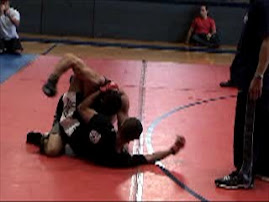 The N.B.A. has built community basketball courts in neighborhoods across India, like Nagpada in Mumbai.
The N.B.A. has built community basketball courts in neighborhoods across India, like Nagpada in Mumbai.With a critical mass of Chinese now playing basketball and firmly following the N.B.A., the league is turning to the world's second most populated country, India, in hopes that the sport's relatively inexpensive structure will eventually stimulate an "Indian Yao" and new mass market:
... basketball’s popularity could grow rapidly in India because of the sport’s relative simplicity and the fact that a court can be created almost anywhere one can hang a hoop. This gives it an advantage over soccer and cricket, which require open fields. Basketball also requires little
specialized equipment.
A core part of the N.B.A.’s expansion strategy in India is increasing grass-roots participation, based on the belief that people who play basketball are also more likely to follow the N.B.A. The league also knows that the more Indians who play basketball, the more likely it is that one day an Indian player will be good enough to make the leap to the N.B.A. — an event that could vastly expand the league’s popularity in the world’s second-most-populous nation.
Considering the N.B.A. a global business, it is important to illustrate how players are constructed as international symbols, used to further the capitalist culture. As explained in Robbins's (2011) Global Problems and the Culture of Capitalism, the capitalist culture, or consumer culture specifically, divides people into three distinct statuses, which each have separately defined roles in perpetuating mass accumulation:
Capitalists - encourage the accumulation of profit
Laborers - encourage the accumulation of wages
Consumers - encourage the accumulation of goods (p. 11)
But there are what Robbins refers to as "sandpainters," who truly orchestrate society's obsession with mass consumption.
...every society has its sandpainters, those individuals who are given or who take responsibility for representing the universe to others and who have the power to define those elements that are essential for others in locating and defining their identities.... In capitalism, the sandpainter works in churches, synagogues, or mosques, and in theaters, in front of television sets, at sporting events, or in the shopping malls that reaffirm the vision of abundance central to the consumers' view of the world. Contemporary sandpainters...create a vision of the world designed to maximize the production and consumption of goods. (p. 13).
In this case, the N.B.A. executives who begin their early marketing stages in India are the "sandpainters" who hope to find their first symbolic Indian basketball player that will turn basketball into a perceived need for that critical mass of Indian boys and young men -- the potential consumer group. More from The NY Times article:
A core part of the N.B.A.’s expansion strategy in India is increasing grass-roots participation, based on the belief that people who play basketball are also more likely to follow the N.B.A. The league also knows that the more Indians who play basketball, the more likely it is that one day an Indian player will be good enough to make the leap to the N.B.A. — an event that could vastly expand the league’s popularity in the world’s second-most-populous nation.
As the N.B.A. sandpainters take their early steps, building a perceived need for basketball among Indian boys and young men through the development of the first Indian star with mad basketball skills, a few questions are worth asking. Is the N.B.A. truly trying to spread the game for the sake of community development? Or, is it about developing the next big market that will purchase Kobe's and LeBron's jerseys?
Photo via The New York Times

academics











